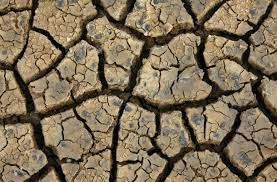
DRY weather conditions have returned to Zimbabwe and other parts of the southern African region with a long-range outlook forecasting below-average rainfall due to the prevailing El Nino weather conditions, the World Food Programme (WFP) has said.
In its latest report WFP indicates that the dry spell had rebound although a possible Cyclone Candice off the coast of Madagascar may affect some parts of southern Africa, including Zimbabwe.
However, the Meteorological Services Department (MSD) called on the public to enhance water harvesting whenever possible in the wake of the dry spell.The MSD also advised farmers to start applying pesticides and fertilisers this week with guidance from local agriculture extension officers.In its report, WFP said its observations and forecast showed that by the end of January most of the region will have received below average rainfall, particularly Namibia, Botswana, Zimbabwe, Mozambique and southern Madagascar.
“Malawi and Zambia also appear to have been affected. Rainfall deficits were particularly extreme so far in parts of Botswana, South Africa and Zimbabwe,” said WFP.“The short-range outlook indicates a return to dry conditions in the southern part of the region, in particular Mozambique, Zimbabwe, Botswana, Namibia and Madagascar, and deficits in Malawi and Zambia too.
“February and early March rainfall is critical for the outcomes of the harvest and will be monitored carefully. The long-range outlook indicates the region is still expected to receive below average rainfall overall, this is particularly likely in areas of Namibia, South Africa, Botswana, Zimbabwe and southern Mozambique.”
The report also added that while below average cyclonic activity is expected this season, the forecast for cyclonic activity in the vicinity of Madagascar was near normal to above normal.
“Only one tropical cyclone can lead to catastrophic damage across the southern Africa region, both in the immediate term and on future food security. Further tropical activity is expected during the remaining two months of the cyclone season,” the report said.
The WFP said the January dry spell was also set to affect vegetation across Zimbabwe as the season has been marked with irregular rainfalls.“Vegetation coverage across the region has improved compared to December, thanks to the impact of December rains on the soil. Above average vegetation is observed in Tanzania, South Africa, Angola, DRC and parts of Zimbabwe and Mozambique,” WFP noted.
- Mavhunga puts DeMbare into Chibuku quarterfinals
- Bulls to charge into Zimbabwe gold stocks
- Ndiraya concerned as goals dry up
- Letters: How solar power is transforming African farms
Keep Reading
However, there remain areas of below-average vegetation in Namibia and Botswana, and to a lesser extent Zimbabwe, Zambia, Mozambique and Madagascar that may worsen with the forecasted January dry spell.
“Given that the season has been marked by irregular rainfall, alternating between wetter and drier periods, most countries have experienced dry spells. Parts of Namibia and northern DRC have experienced long dry spells of more than 26 days,” the report added.






